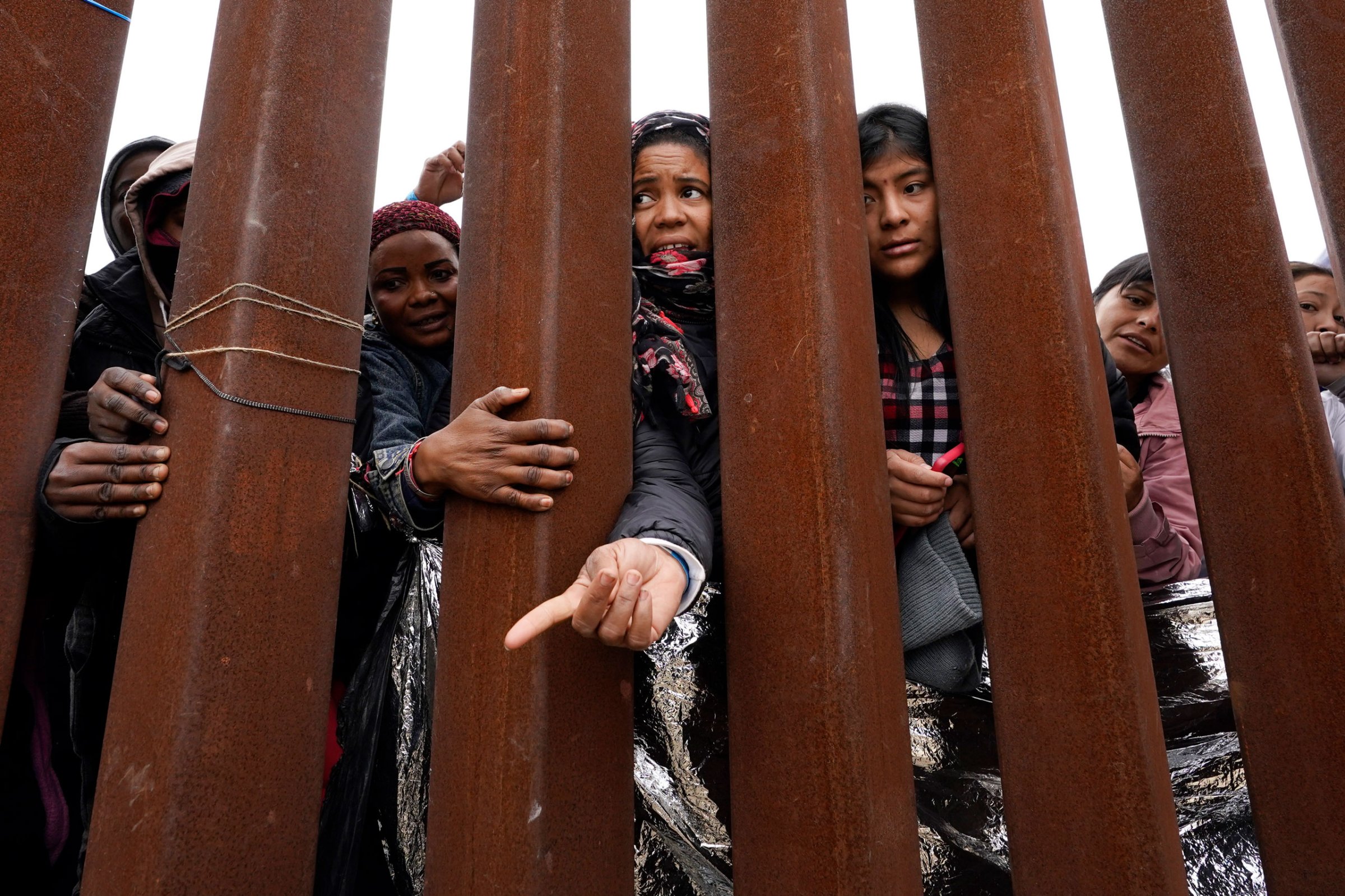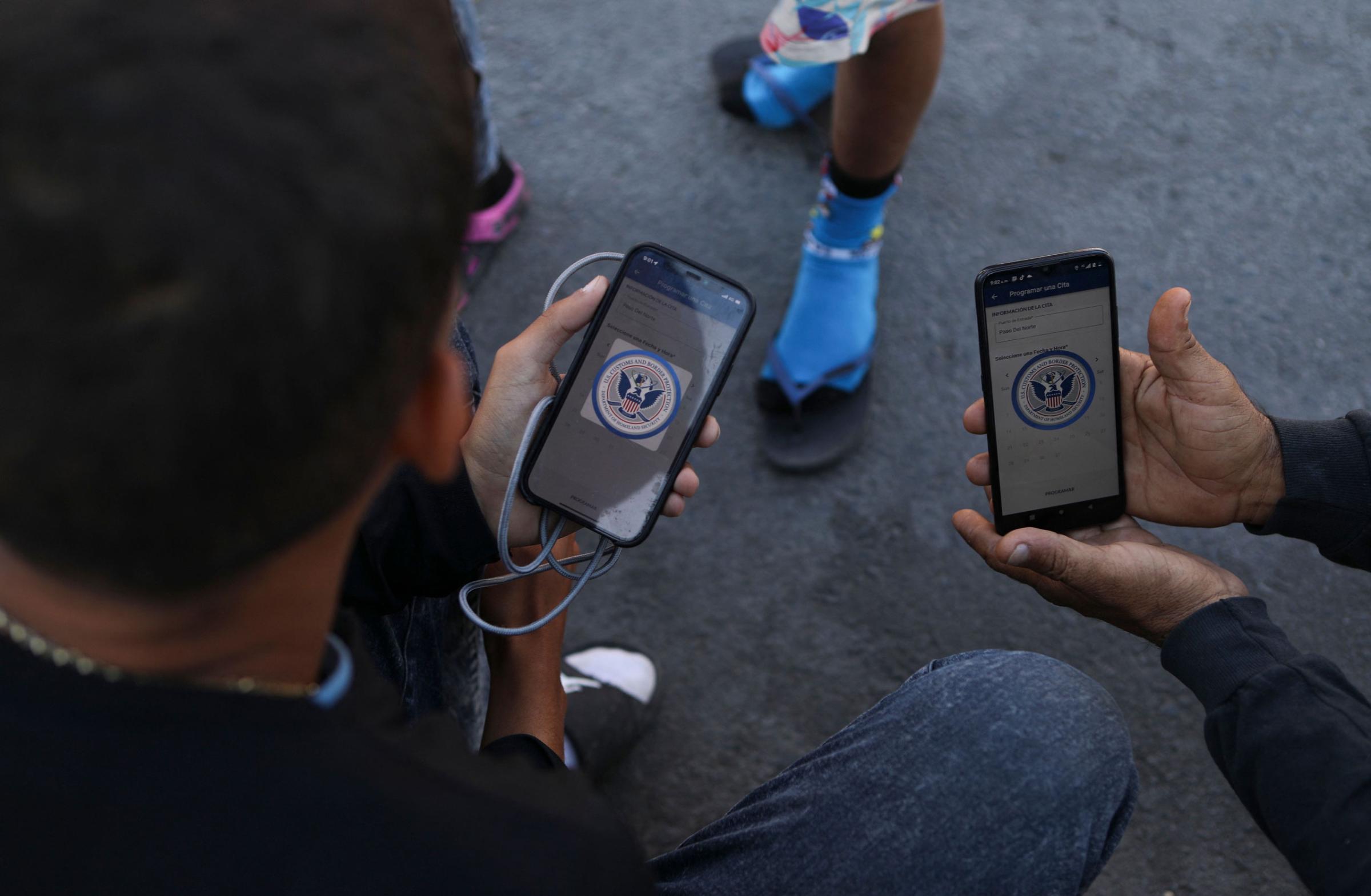
In late May, a migrant woman from Honduras crossed into Dallas, fleeing violent threats from gang members back home and seeking asylum in the U.S. While she waited in Mexico, men from a cartel would rape her every couple of days as part of a “rent payment,” according to her attorney.
What happens next to the woman is mired in problems exacerbated by the Biden Administration’s new border rules. When she approached border officials near the Mexican city of Matamoros to cross over into Texas, she hadn’t scheduled an appointment through the federal government’s new CBP One App, which only offers 1,000 daily appointment slots and has been riddled with glitches and accessibility issues. The woman had tried to secure an asylum appointment through the app for four months before giving up, says Priscilla Orta, supervising attorney at Project Corazon, who represents her. (The woman, who exchanged messages with TIME, did not give permission to use her name because of concerns speaking to the media would affect her case.)
Without an asylum appointment, the woman will have to prove to a judge that she had a good enough reason to enter the U.S. without going through the app—a difficult proposition under the new rules. So when her court date comes around in August, she faces a high risk of being deported back to Honduras.
If she had approached the border just a week earlier, the harrowing details of her case would have likely led to U.S. officials granting her an asylum appointment and emergency parole, according to Orta. That’s been standard U.S. policy applied at most ports, even during the pandemic. But in recent weeks, as the Biden Administration has overhauled the rules of the border, cases like these are often being treated like just any other asylum case, with little consideration for emergency circumstances. It has become much harder to get speedy asylum appointments for migrants in emergency situations at two ports of entry in particular, Matamoros and Reynosa, according to immigration advocates.
“I always felt like, no matter how bad it got, there was a safety valve for the most extreme cases. They shut that valve. They cut it off,” Orta says. “This is worse than anything I experienced under the Trump Administration.”
Read More: Biden’s Rightward Shift on Immigration Draws Comparisons to Trump

Another immigration advocate working in the same area says it has become harder for emergency exceptions to be made at these ports. A third, working in Nogales, Arizona, reports it has been harder for emergency cases to get an appointment quickly since January, when the U.S. government increased its reliance on scheduling migrant appointments through the the CBP One App, which doesn’t ask migrants why they are seeking asylum or provide space to flag any urgent threats.
“CBP is processing individuals who arrive at ports of entry and is not turning people away,” Justin Long, a U.S. Customs and Border Protection (CBP) spokesperson, tells TIME in a statement. “CBP will make processing determinations upon the noncitizen’s arrival at a port of entry, on a case-by-case-basis, and outcomes may vary depending on the specific circumstances of each case.” Long said CBP is prioritizing processing migrants with documentation and those who have made appointments through the CBP One app.
Every port may work differently. When policy is built on a case-by-case basis, there’s going to be more variability in the response—even for those facing similar circumstances, says Julia Gelatt, senior policy analyst at the Migration Policy Institute, an immigration policy think tank based in Washington, D.C. A person crossing the border in Matamoros, for example, may not receive the same treatment as another crossing in Tijuana—even if they are dealing with a similar threat. That flexibility allows local CBP offices to take into account issues such as crowding at detention facilities. But the new guidance that they should prioritize migrants who have made appointments through the CBP One app—which doesn’t allow them to specify their circumstances—has effectively meant all asylum claims are lumped together.
After the pandemic-era immigration policy Title 42 expired in May, the Biden Administration instituted a strict new rule stating if a person did not seek asylum in the country they passed through to get to the U.S. or didn’t use the CBP One phone app to do so, any asylum claim they make in the U.S. will likely be rejected.
The U.S. government “wants everyone to use the CBP One app no matter what the circumstance is…everyone is treated the same right now,” says Felicia Rangel, executive director of the Sidewalk School. But since the app doesn’t allow migrants to explain dire situations, it can leave people fleeing extreme violence—who previously might have been given special consideration by border officials—waiting in the same lottery system as everyone else arriving at the border.
Read More: ‘It’s Like a Lottery.’ Migrants Struggle to Make Asylum Appointments Through U.S. Government App
“The app is a lottery system. It’s not prioritizing based on vulnerability or need for protection. It’s prioritizing based on who has the luck of the draw and…who has been waiting the longest to get a CBP One appointment,” says Gelatt. “There’s no intention even of targeting it for people who have humanitarian protection needs.”

Some immigration advocates note the app may not ask about why someone is seeking asylum because it could be considered official documentation and be used against them if the explanation differs from what they say on their official asylum application or interview. But “the issue is that there’s no way to flag the urgency of cases,” says Joanna Williams, executive director of the Kino Border Initiative, based in Nogales, Arizona. Before the government expanded the use of the CBP One App in January, non profits, shelters, and attorneys would alert the U.S. government to more extreme cases. That’s no longer standard procedure.
Some attorneys say that those in dire circumstances have faced barriers to seeking asylum for urgent humanitarian reasons for years. “It’s actually been very hard for advocates to effectively have these humanitarian parole requests acknowledged, reviewed and adjudicated in a timely manner,” says Chelsea Sachau, an attorney at the Arizona-based Florence Immigrant and Refugee Rights Project.
But the extreme reliance on the CBP One App and the refusal of some ports of entry to consider emergency cases has only exacerbated the problem for fast-tracking these cases, immigration advocates say.
-With reporting by Vera Bergengruen
More Must-Reads From TIME
- The 100 Most Influential People of 2024
- Coco Gauff Is Playing for Herself Now
- Scenes From Pro-Palestinian Encampments Across U.S. Universities
- 6 Compliments That Land Every Time
- If You're Dating Right Now , You're Brave: Column
- The AI That Could Heal a Divided Internet
- Fallout Is a Brilliant Model for the Future of Video Game Adaptations
- Want Weekly Recs on What to Watch, Read, and More? Sign Up for Worth Your Time
Write to Sanya Mansoor at sanya.mansoor@time.com